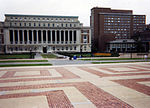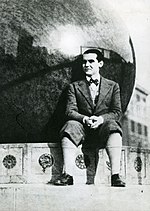Butler Library
1934 establishments in New York CityColumbia University LibrariesLibraries in ManhattanLibrary buildings completed in 1934University and college academic libraries in the United States ... and 1 more
Use mdy dates from November 2019

Butler Library is located on the Morningside Heights campus of Columbia University at 535 West 114th Street, in Manhattan, New York City. It is the university's largest single library with over 2 million volumes, as well as one of the largest buildings on the campus. It houses the Columbia University Libraries collections in the humanities, history, social sciences, literature, philosophy, and religion, and the Columbia Rare Book and Manuscript Library. The Neoclassical style building was built in 1931–1934 to a design by James Gamble Rogers. Butler Library remains at least partially open 24 hours a day during the academic year.: 1–2
Excerpt from the Wikipedia article Butler Library (License: CC BY-SA 3.0, Authors, Images).Butler Library
West 114th Street, New York Manhattan
Geographical coordinates (GPS) Address External links Nearby Places Show on map
Geographical coordinates (GPS)
| Latitude | Longitude |
|---|---|
| N 40.806388888889 ° | E -73.963333333333 ° |
Address
Butler Library
West 114th Street 535
10027 New York, Manhattan
New York, United States
Open on Google Maps







